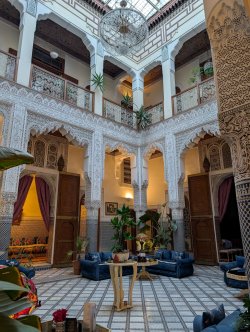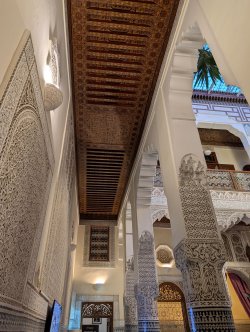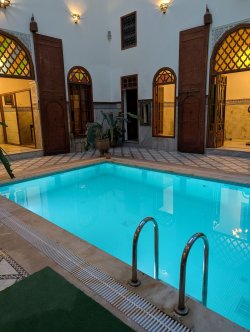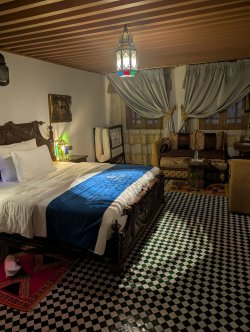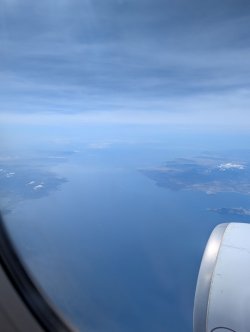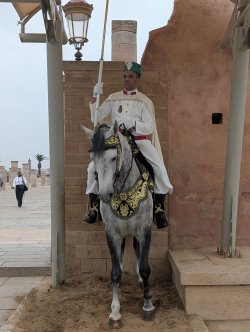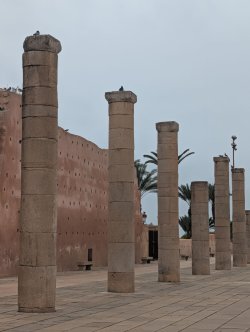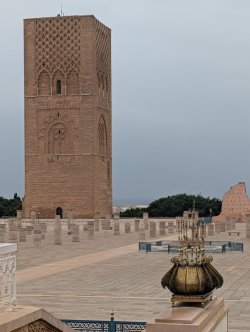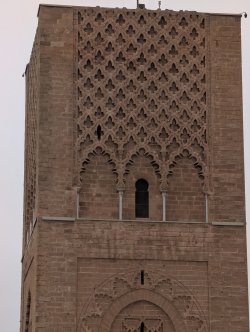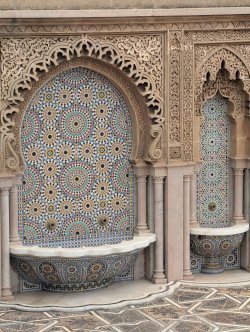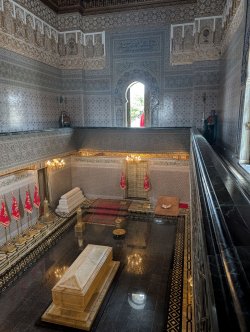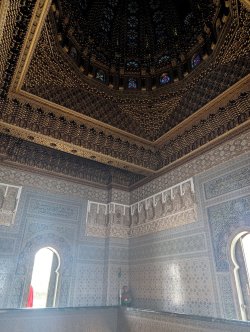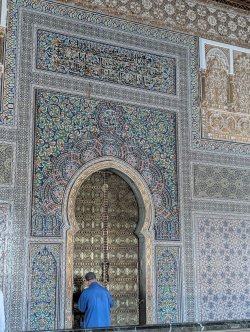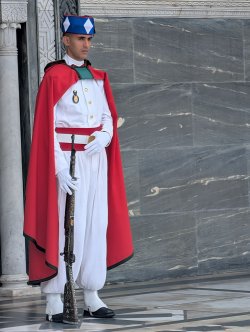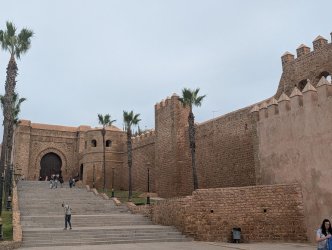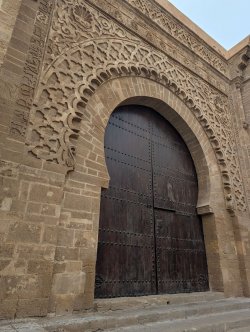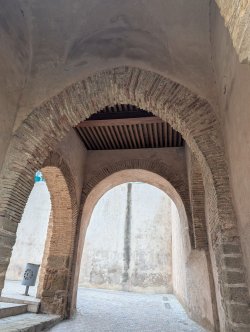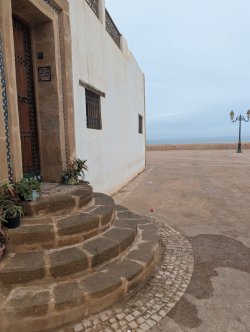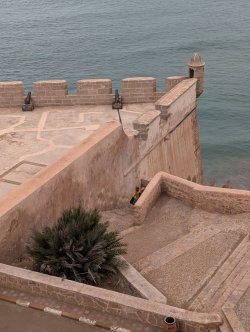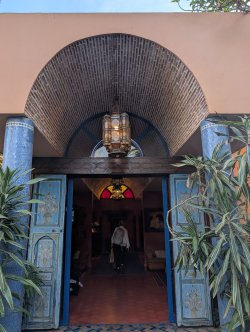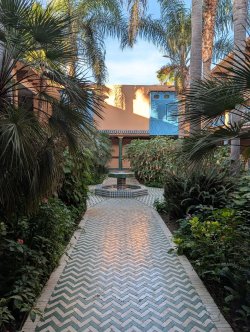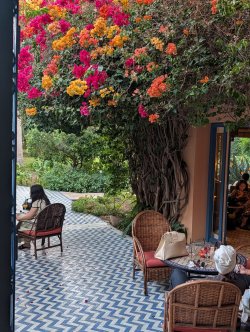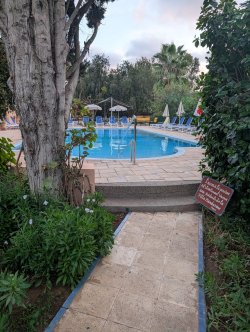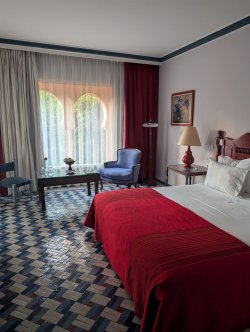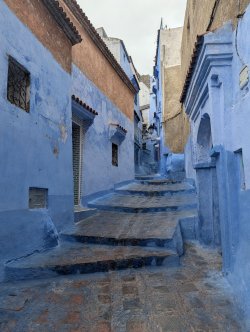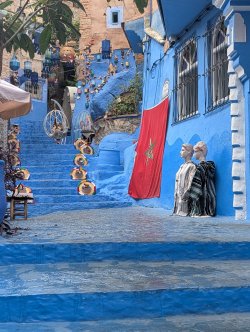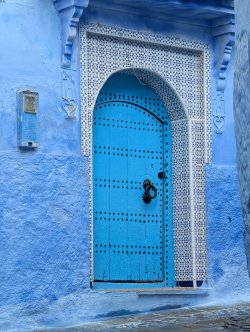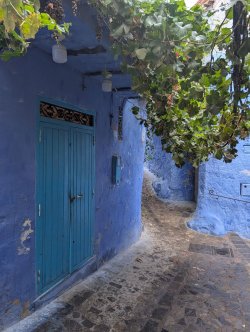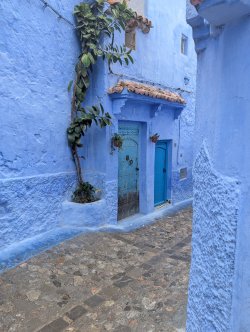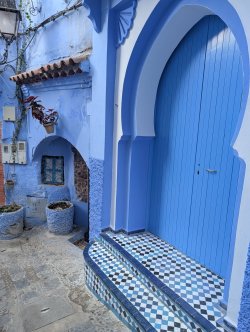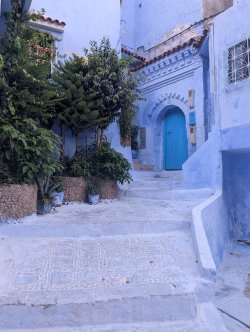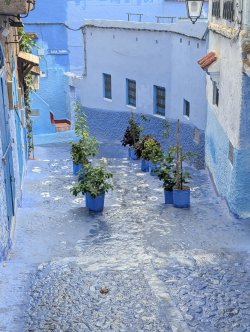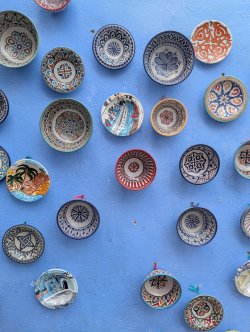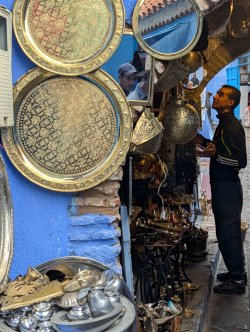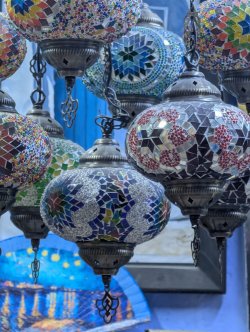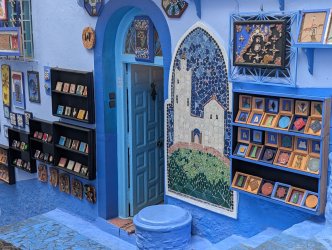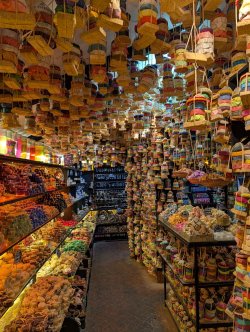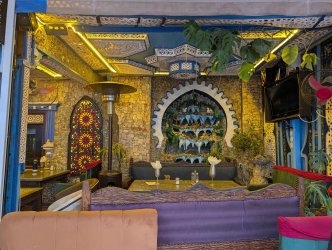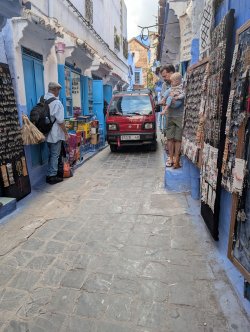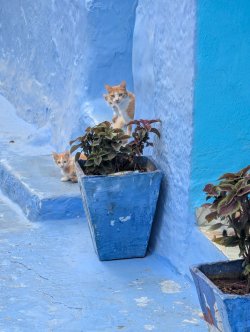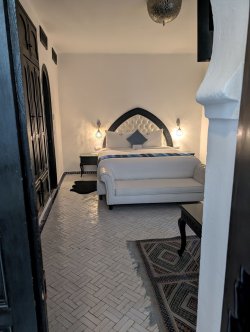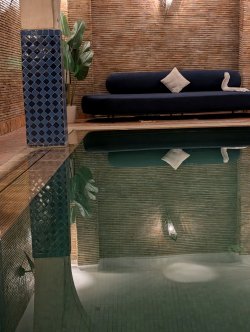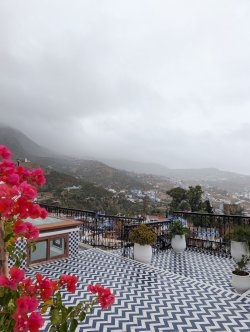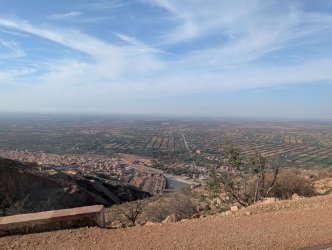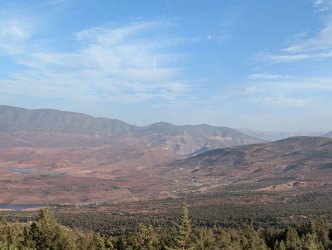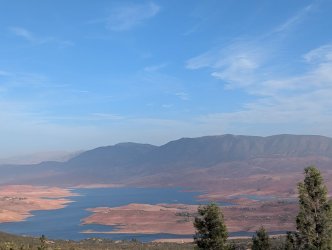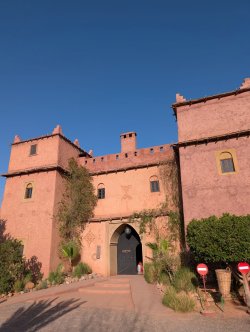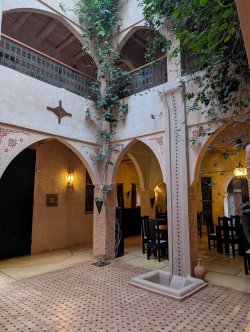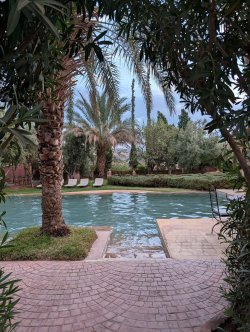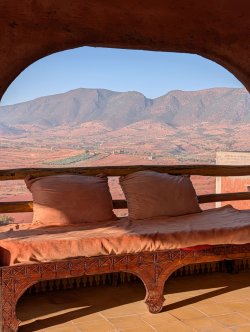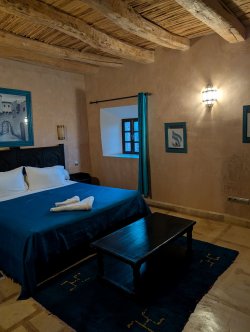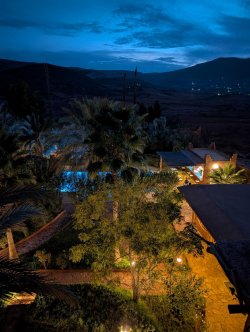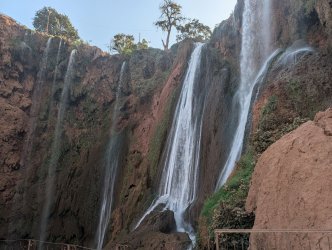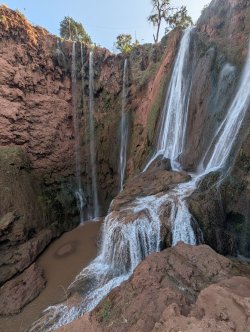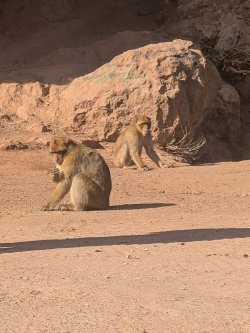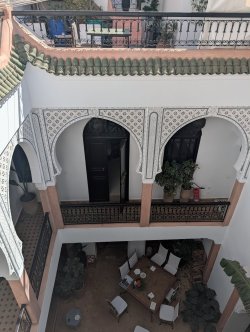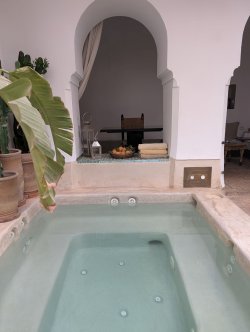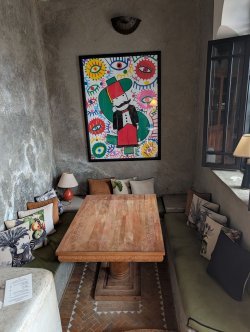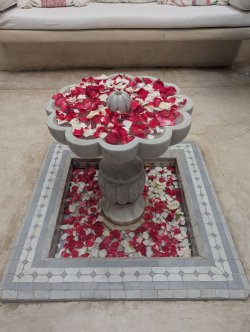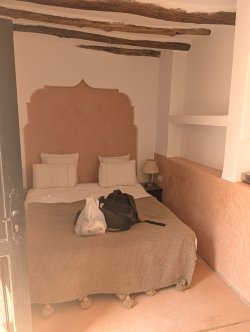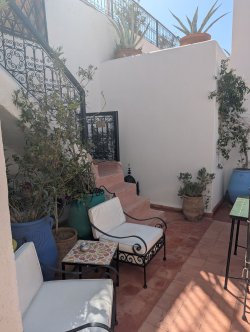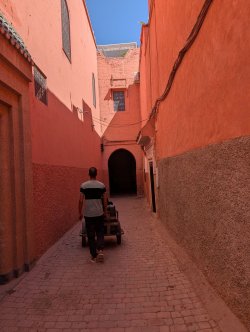VOLUBILIS
Volubilis was the southern most point of the Roman Empire, to the north, Scotland.
Berbers were here since the 3rd century BC, until 40 AD when Caligula killed the Berber king, and claimed the site for Rome, together with Rabat to the west and Tangier to the north. With a limestone quarry nearby, the city had fertile soil and mountain springs. Arabian horses were exported from this area to Rome. At its height, Volubilis had up to 12,000 inhabitants.
The Romans kept the city for 300 years before the local tribes retook it, and 700 years later it became an important Islamic seat.
The site was rediscovered during French Moroccan rule, and is today a UNESCO site. The mosaics are stunning!
Legend says Hercules came to Morocco when Europe and Africa were still connected, and he separated the continents to build the Mediterranean Sea. I don't know why they bother with such legends when Atlas already created the Atlas Mountains and the Atlantic when he was at war with Zeus.
...
FES
There are 10,000 alleyways in the old medina which has existed since 808 AD. Salt was traded here from Salt mines in the Atlas Mountains, and exported in the 16th century - 1 kilo of salt was equal in value to 1 kilo of gold. The holes in the external walls of the medina are from the scaffolding used during building, but they leave them there for ventilation as it helps the wall dry quicker after rain
There is a 14km wall around the medina; 170 mosques; and 200,000 people currently live here. The French built Fes New Town in 1912 but Moroccans weren't allowed to live there, it was for the French only.
We visited pottery works where we saw how the clay tiles are made for their mosaic works. The workers today get paid per tile so they are very productive. They bring clay from the mountains, add water, put it into moulds, and then wait for it to dry in the sun.
We saw carpets being handmade - a 3m x 2m carpet can takes 18 months to complete, and costs about A$5,000.
We visited a tannery, the oldest in North Africa dating from the 11th century, and they continue to use the same processes today - pigeon poop and water (and it stank like nothing else). Locals keep pigeons and collect the poop to sell. 1kg of poop is bought for 100dh (A$16). They tan skins from goats, sheep, camel and cows, with goat leather being superior for its strength, softness, and water proofing...even the suede is water proof.
...
The old Medina of Fes is an assault on every one of your senses, and it's just everyday life for the people living here. Donkeys remain a valid form of transport. Meat is sold unrefrigerated, decapitated camel heads indicate that stall sells camel meat.
We saw the oldest and first university in the world, but later Google told me it was opened as a mosque teaching Islamic literature rather than having been the home of philosophers and historians. We've seen shrines to teachers, and various guides talk about teachers with reverence, but then you find out that they are not teachers of mathematics and history and science, but of Islam. The Arabs made great advances in mathematics, they gave us Arabic numbers and Algebra, but none were talked about by our guides.
The Constitution in Morocco is constantly changing and each King brings his own version of life, recently allowing women to work. According to our guide, the women are now taking all the jobs ("even in education" he said incredulously) leaving many men jobless...and jobless man can't get married. Please, won't someone think of the men!
He told us about their marriage traditions, arranged marriages, and 3-day wedding ceremonies. If you can't talk to a woman alone how do you meet her? You see a woman, you find out who she is, a female family member of yours might go to that local hamam and scope out her family, then your father goes to her father and they decide if you can have her! You then have a couple of chaperoned conversations, and off to your wedding you go. You sell men and it's called slavery. You sell women and it's called a dowry.
They live in Fes now exactly as they lived a thousand years ago, and probably how they lived in Volubilis a thousand years before that, except now next to the pomegranates you can purchase a fake Louis Vuitton bag from a man wearing a North Face shirt. Fes was a good experience and essential when travelling to Morocco, but I can't say I ever want to visit it again.
...
Volubilis, I'm really glad the tour included this site. As nothing was ever built on top of the site the mosaics have survived in their original designs.
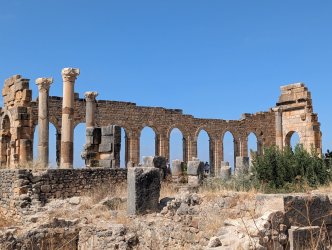
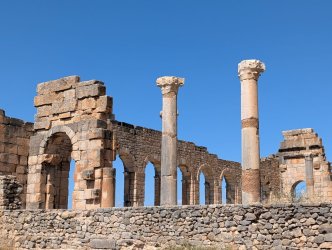
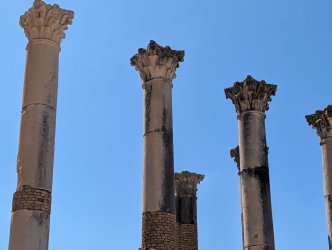
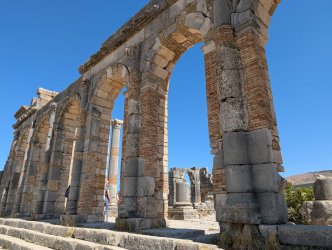
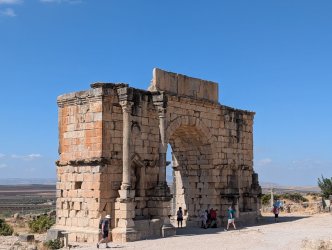
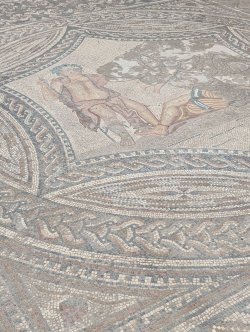
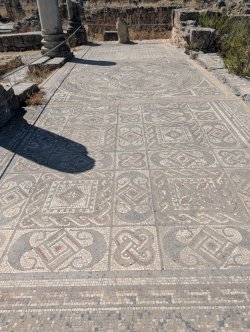
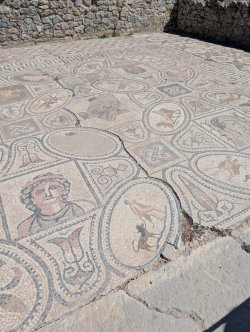
Fes, we walked 7km through the medina with a guide directing us the whole way. He no longer lives there, but he grew up there and expertly knew every street, not once doubled back or checked where he was going. You would get lost for days without one.
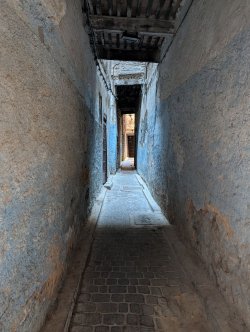
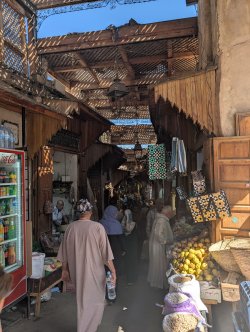
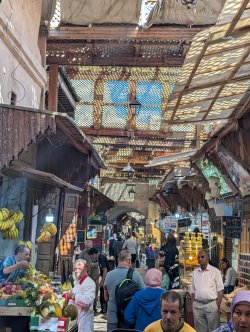
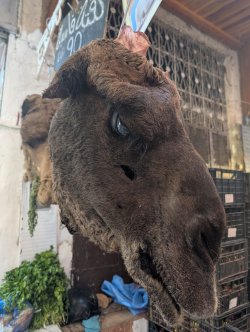
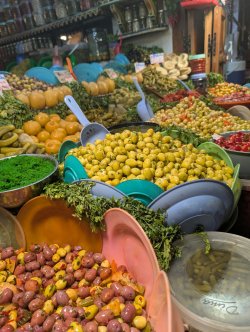
Our hotel is near the green roof
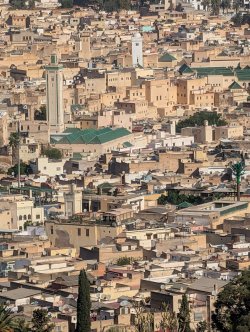
Mosaics at the pottery
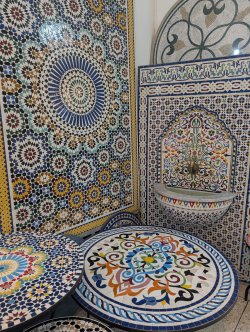
The tannery was on the roof
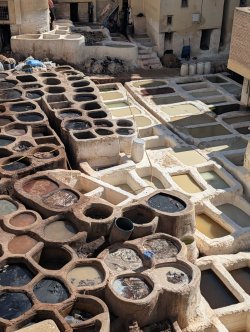
Palais d'Hotes, Fes - absolutely stunning hotel. The waiter thanked us for staying with them and for eating at the hotel 2 nights in a row because it allowed him to earn an income. The hotel had no alcohol officially, but each time we ordered something he got on his motorbike and went to a back-alley to buy some. We could pay for everything else on our room, but alcohol had to be paid in cash separately before you left the table...and you had to drink it ALL
